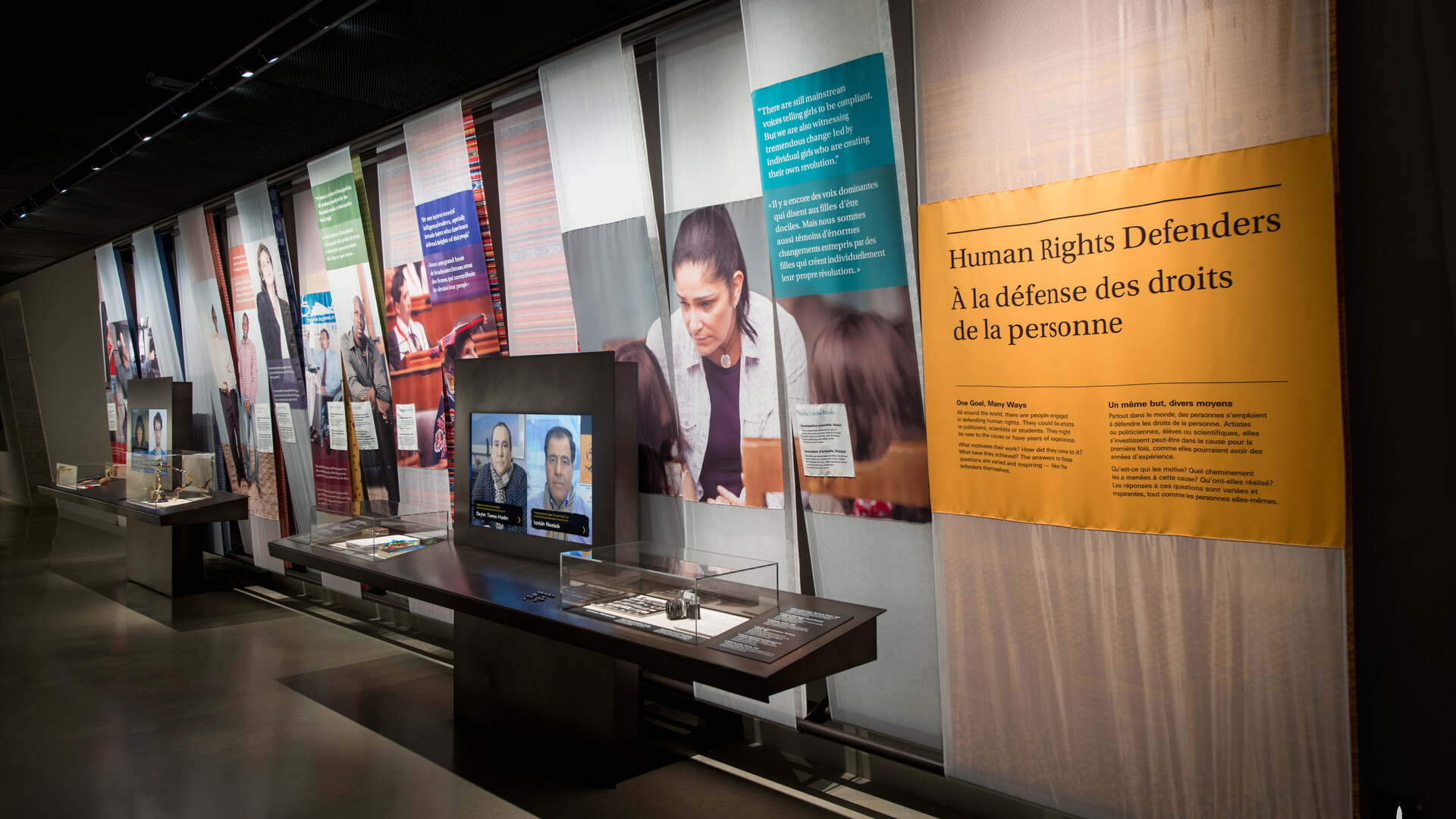Canadian Museum for Human Rights
Manitoba, Canada
The Canadian Museum for Human Rights (CMHR) is set in a spectacular new building in Winnipeg, Manitoba. It aims to be a center of learning that is ‘dedicated to the evolution, celebration, and future of human rights.’ The building holds eleven thought-provoking galleries that are implemented using an approach to inclusive design that aims to set new Canadian and world standards for universal accessibility.
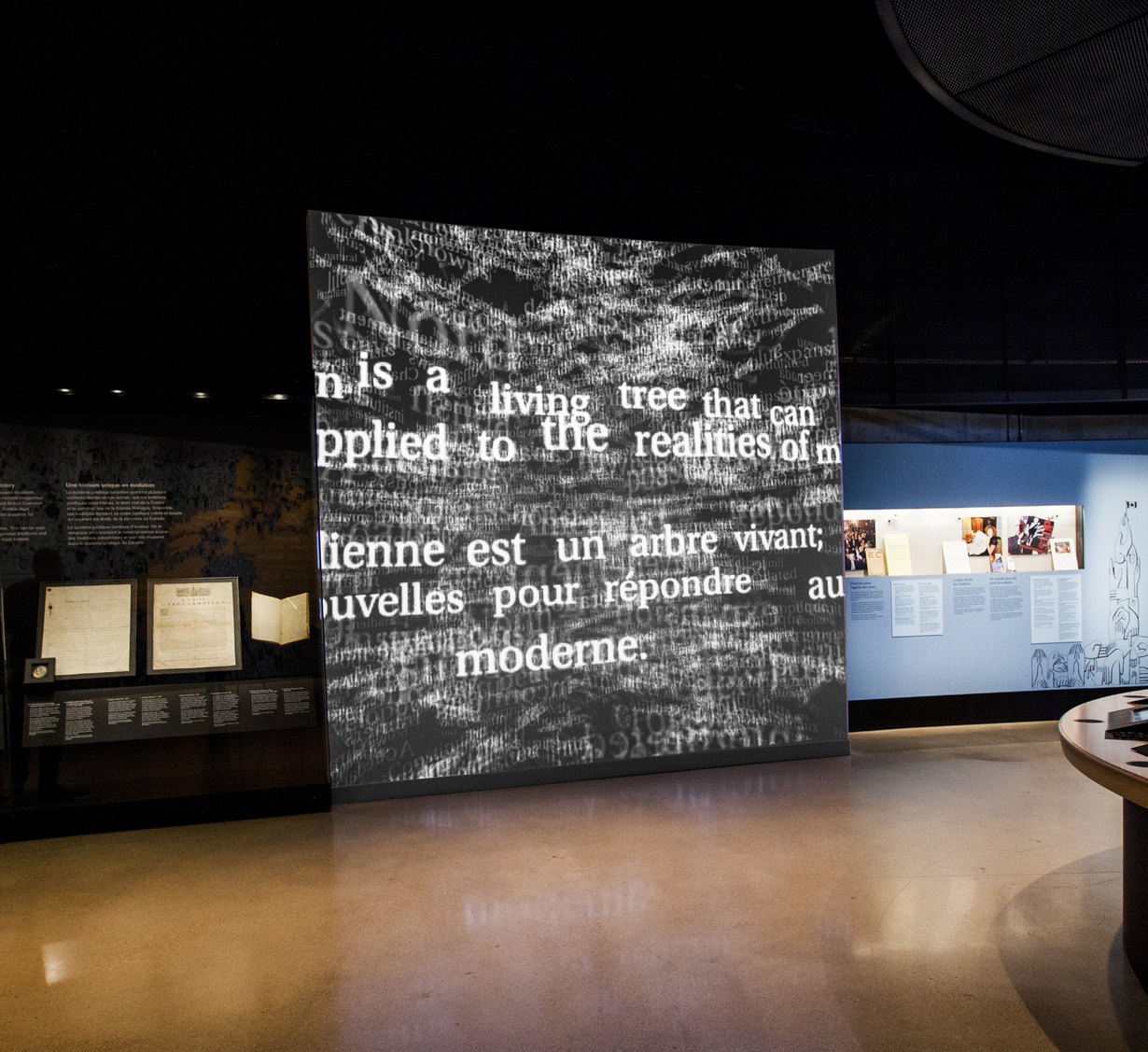
In a gallery called Protecting Rights in Canada, visitors are faced with a large poetic video projection of a “Living Tree”. The Living Tree evokes the flexible nature of Canada’s laws - it sheds light on the unique character of the Canadian Constitution and the traditions that have influenced it. Photography: Ian McCausland/CMHR.

The Living Tree: The metaphor is representative of the evolving nature of Canadian law. Copyright Canadian Museum for Human Rights, 2014.
We applaud the efforts of this firm for its acknowledgement and dedication to challenging our responsibility to make our museums and institutions open and accessible to all. The methodologies practiced in this project should illustrate that it is not enough to simply adhere to government accessibility guidelines by rote. SEGD Design Award Jury
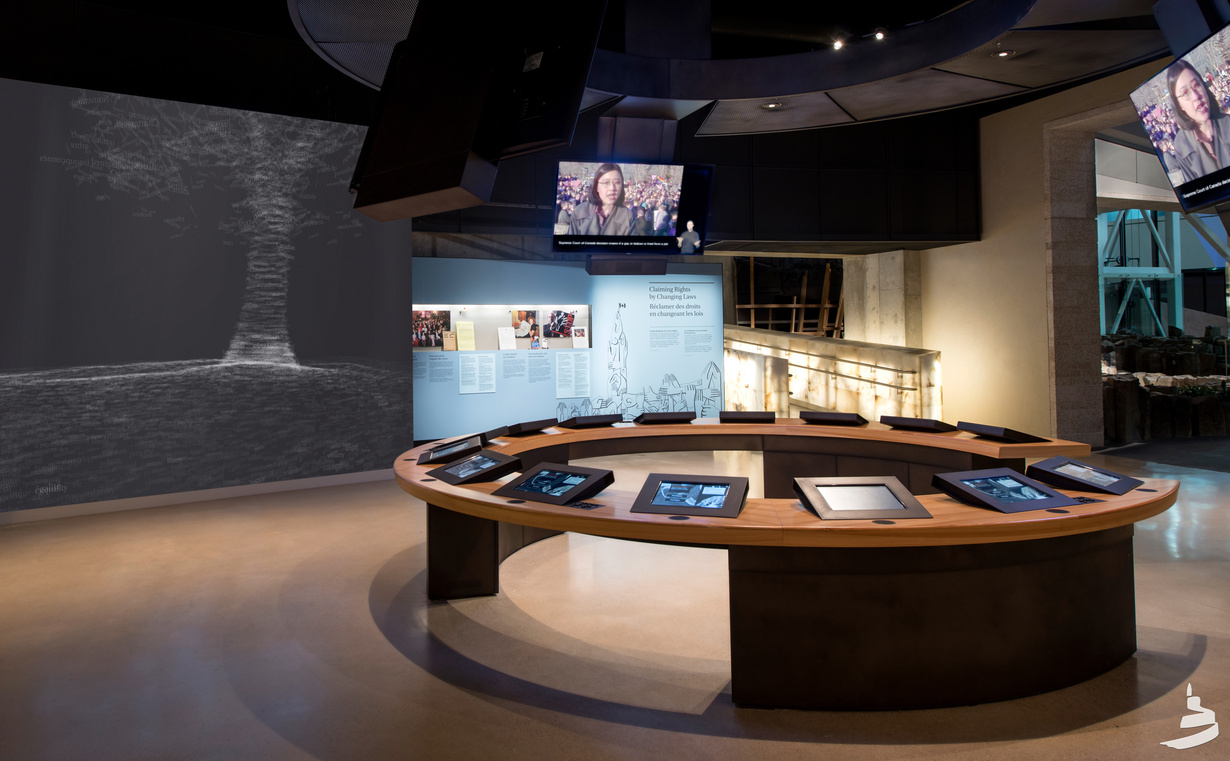
Protecting Rights in Canda and the Living Tree. Copyright Canadian Museum for Human Rights, 2014. Photography: Ian McCausland/CMHR.
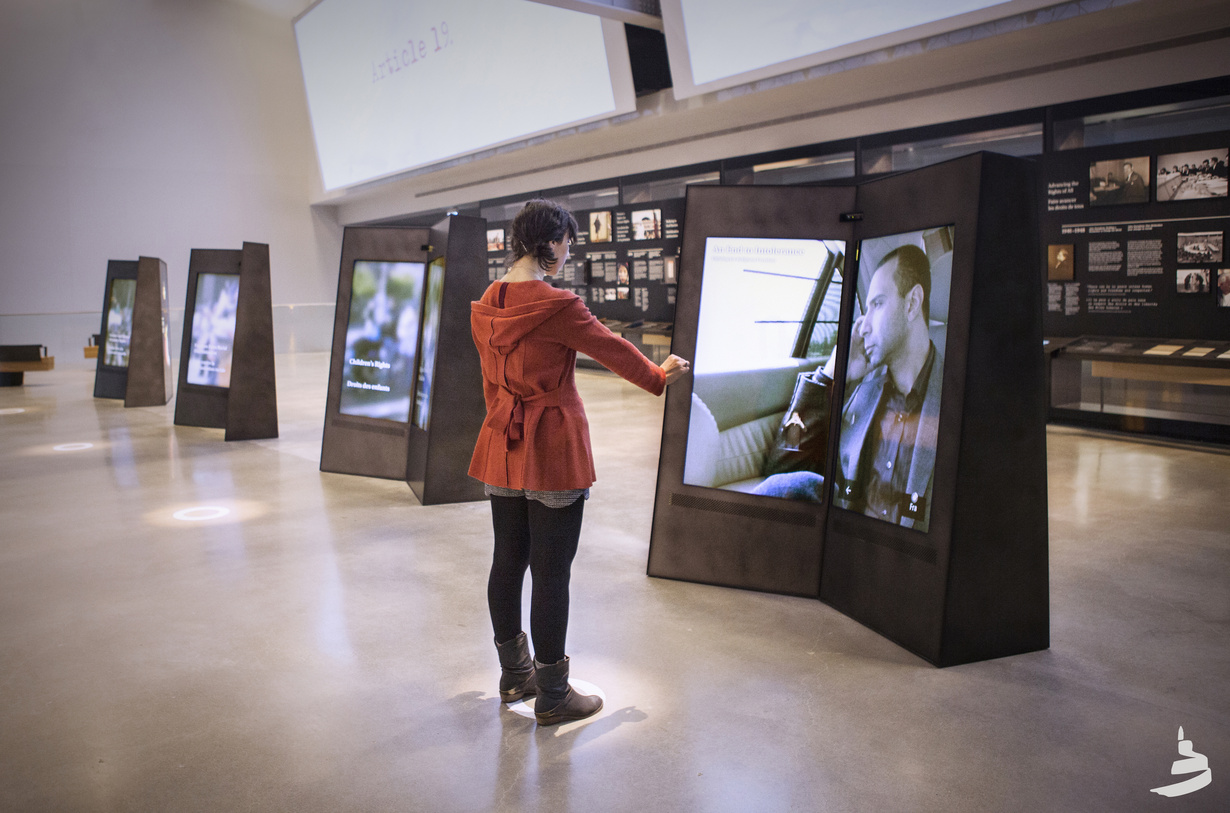
The Collective Actions exhibit features diverse and compelling stories of ground-level activism in a wide variety of human rights fields. The interactive exhibit consists of a series of 8 human rights topics displayed on 4x2 human-sized monitors that resemble a diptych. Each diptych presents two discrete human rights issues for exploration. Photography: Ian McCausland/CMHR.
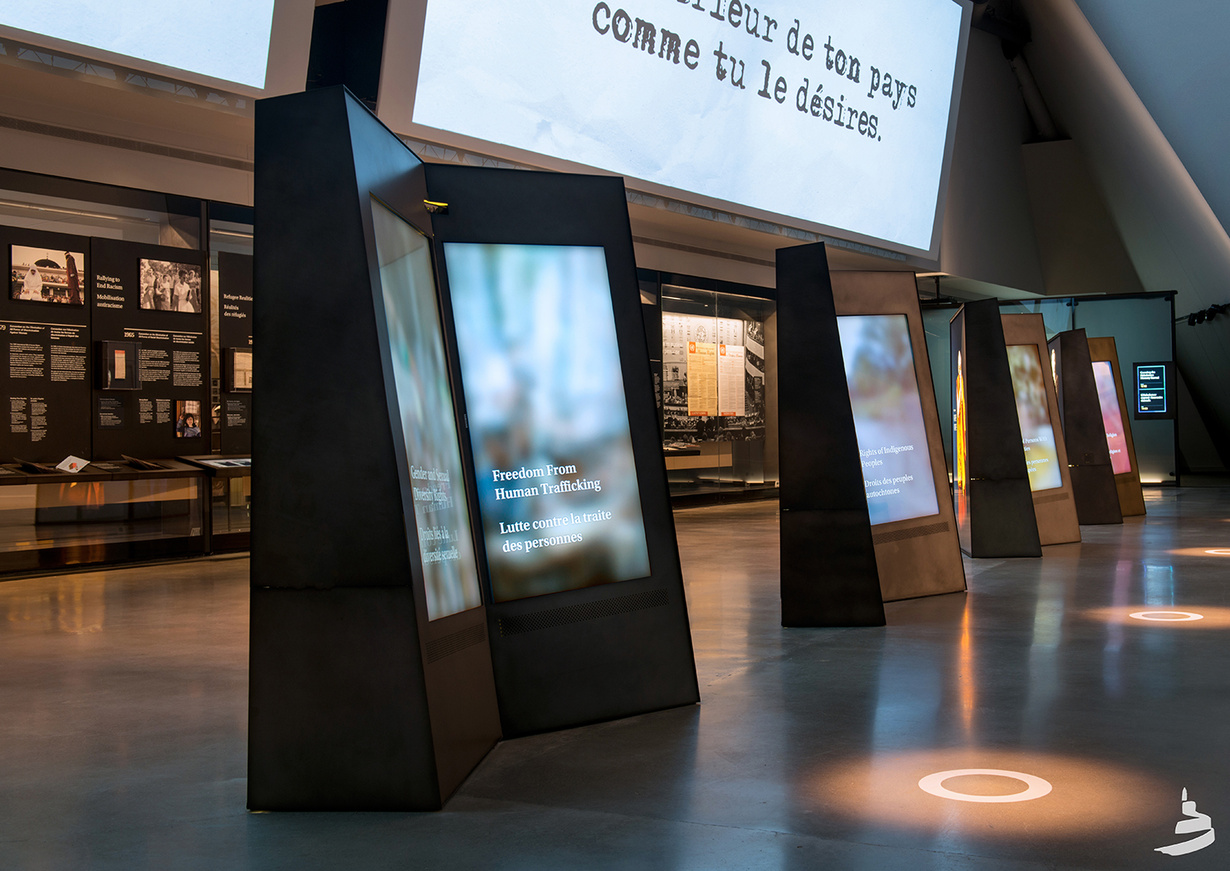
Visitors use point-gestures in order to access the content and as the videos are displayed on large full 55’ screens, the face-to-face encounter between the narrator and visitor creates an intimate and firsthand sensation. Copyright Canadian Museum for Human Rights, 2014. Photography: Ian McCausland/CMHR.
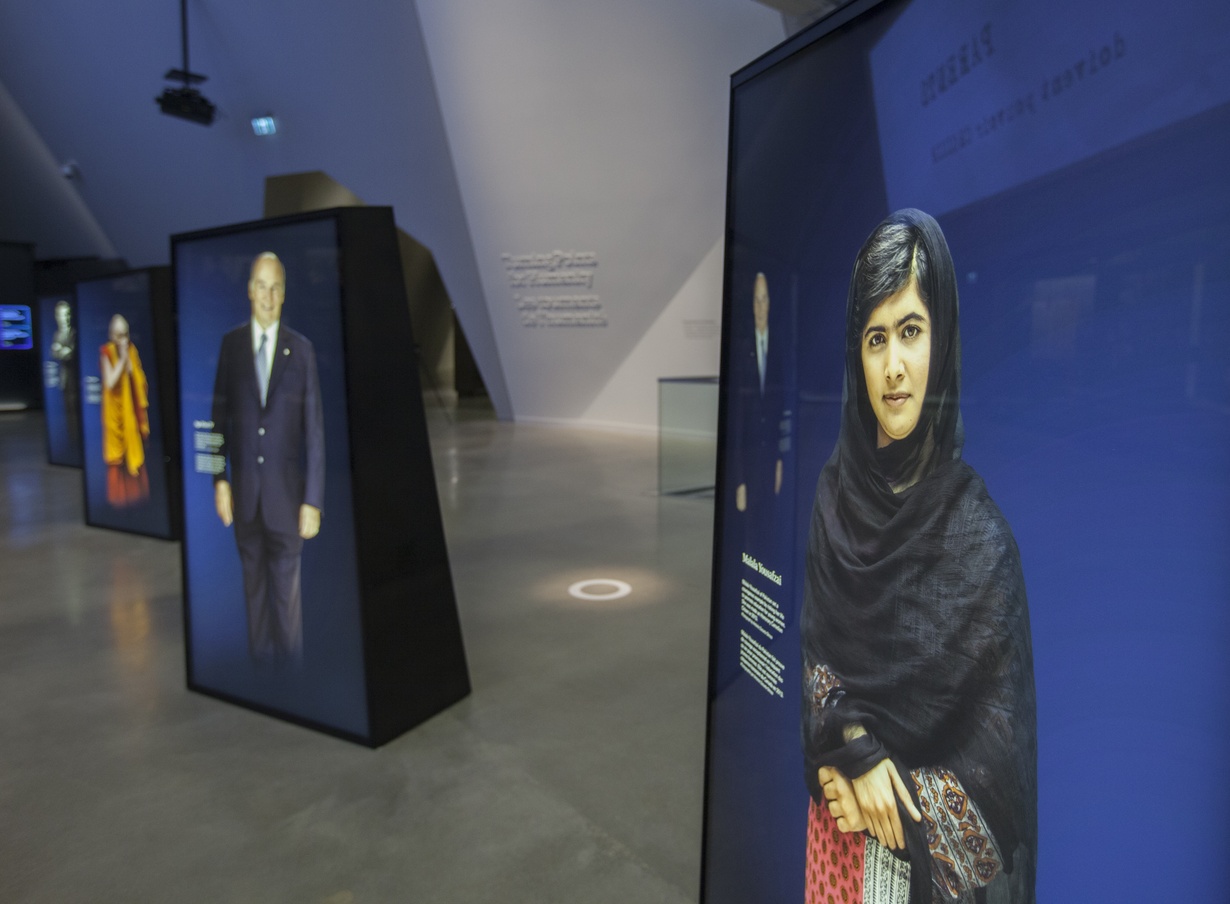
Whenever the exhibit is unattended, the images on the screens are blurred out. However, as a visitor approaches the exhibit, the images incrementally unblur until the visitor reaches the ‘hot spot’ whereupon the image will be clear and onscreen instructions will appear. Copyright Canadian Museum for Human Rights, 2014. Photography: Ian McCausland/CMHR.
We must see access to information as a core value of our culture and continue to challenge ourselves to expand the opportunity of information and experience. SEGD Design Award Jury
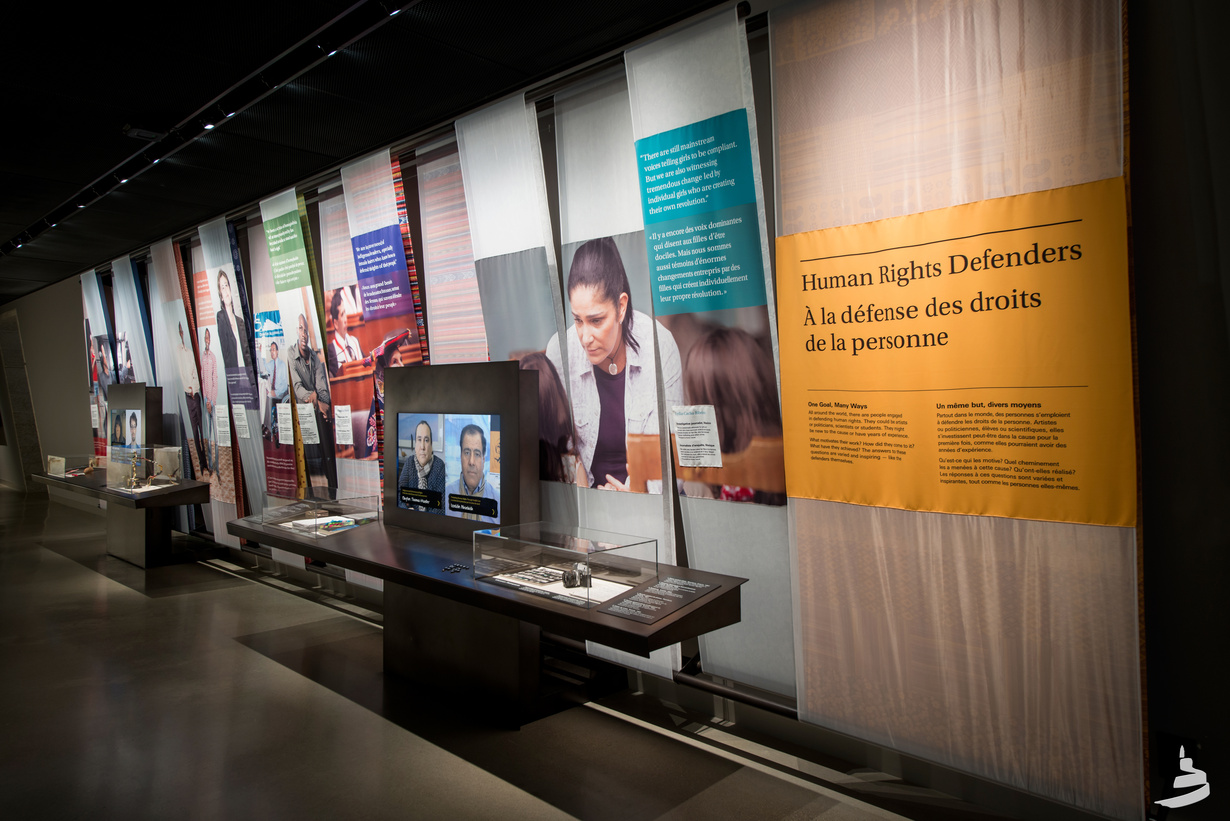
The Defenders Exhibit highlights the remarkable achievements of a selection of Canadian personalities who are fighting actively against human rights abuses. Visitors are taken on a journey to learn about each Defender’s childhood, the events that shaped their, beliefs and continue to drive them to be active in fields as diverse as child labor, women’s rights, and environmental justice. Copyright Canadian Museum for Human Rights, 2014. Photography: Ian McCausland/CMHR.
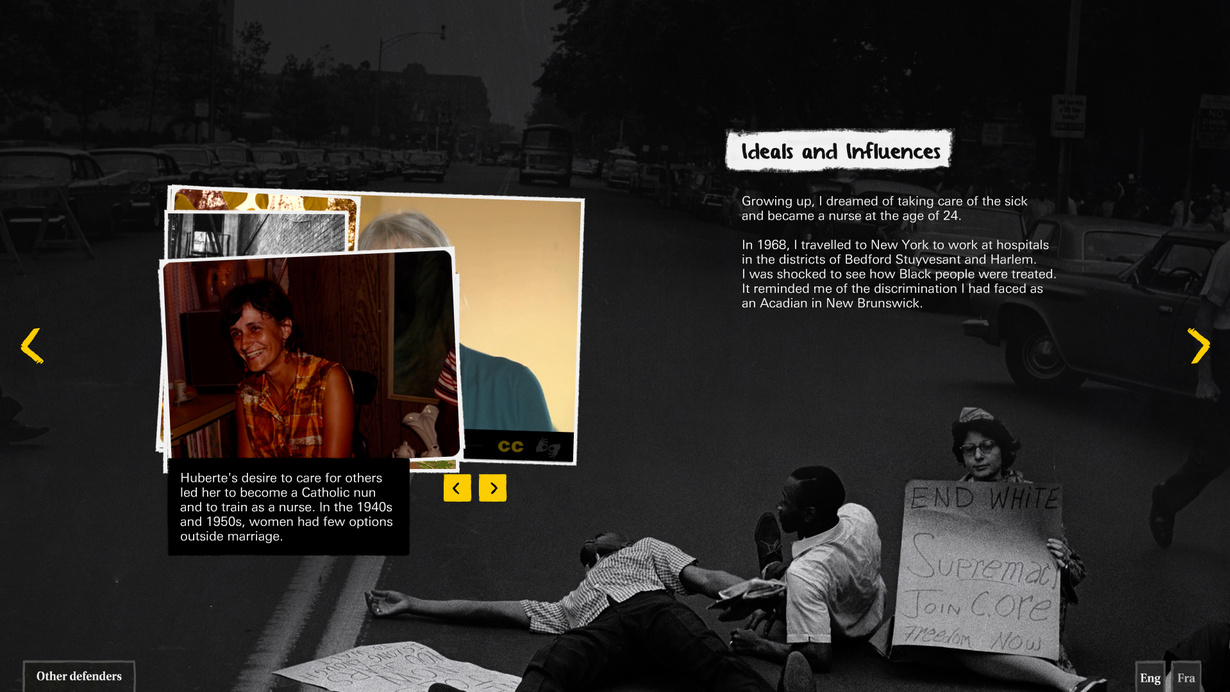
The stories can be accessed through touchscreens, which allow visitors to easily and intuitively interact with the multimedia content. One can learn about Marina Nemat’s incredible escape from torture in post-revolutionary Iran, listen to anti-racism songs by Buffy Sainte-Marie which let her being blacklisted from radio, or watch Craig Kielburger travel to India at the age of 12 to protest against child slavery and upstage the Canadian Prime Minister at the time. Copyright Canadian Museum for Human Rights, 2014.

Antoine Predock is the creative architect of the building. Copyright Canadian Museum for Human Rights, 2014. Photography: Ian McCausland/CMHR.
